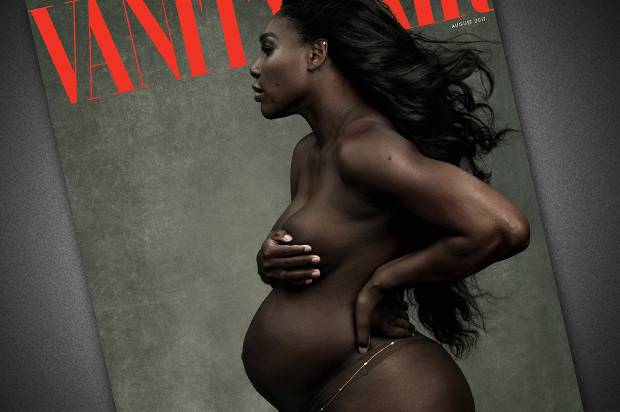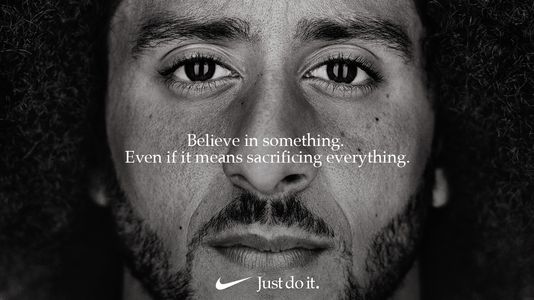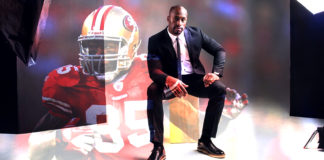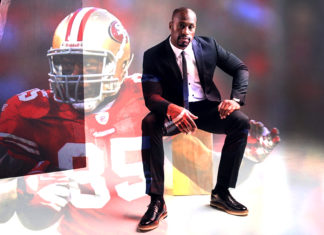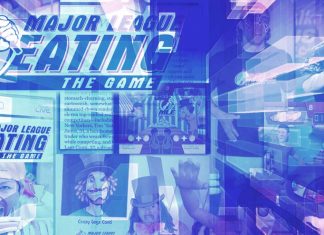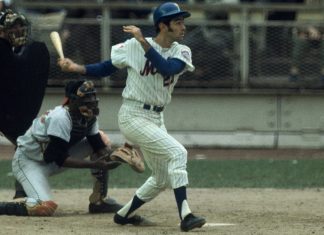It was a hot and humid summer day on Coney Island when George Shea worked his first hot dog eating contest. There were maybe two dozen scattered fans in attendance. There weren’t a lot of contestants — in fact Shea was begging people to come on stage. People did not look at competitive eating as a sport. He loved it nonetheless.
In 1991, Shea took over the hot dog eating contest but was well aware that if competitive eating were ever to be considered a sport, it needed a backstory. Fast forward six years and Major League Eating (MLE), the primary league of the International Federation of Competitive Eating (IFOCE), was formed. At the top of the food chain were the Shea brothers, George and Richard. George would soon become one of the many faces associated with Nathan’s Hot Dog Eating Contest as chairman and ultimate hype man.
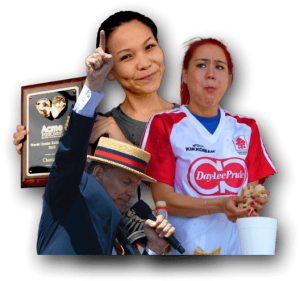

So, how does one join Major League Eating? It’s pretty simple: you must be 18 years or older and sign that you “fully acknowledge the inherent dangers and risks associated with participating in an eating contest.” In other words, you’re risking high blood pressure, increased cholesterol, and a possible heart attack. Oh, and you might gain a few pounds too.
Unlike other sports — and, yes, competitive eating is a sport — the MLE doesn’t require tryouts, minor leagues, or letters of recommendation. As soon as you sign your health away, you are eligible to eat. In almost all events, the MLE invites amateur eaters to compete.
MLE competitors set new eating records every year
Major League Eating typically hosts between 70 and 80 competitions a year, Nathan’s Hot Dog Eating Contest being the most famous. Over the course of the year, $400,000-$500,000 is awarded among the competitions.
Sounds like a lot of money, but not when it has to be split over 75 competitions with prizes to multiple competitors each time. By comparison, LeBron James made almost $500,000 per game in 2018. Aaron Rodgers made over a million a game for the Packers, and that’s all before incentives, bonuses, and endorsements.
Yikes.
Next month will showcase the Fresno Tacos World Taco-Eating Championship. Last year Geoff Esper ate 73 tacos in eight minutes to win, while former hot dog champ Matt Stonie ate 65 tacos for second. Registration is still open and the event will take place on August 17.
Bratwursts more your thing? The third annual Snowbird Bratwurst Eating Contest is August 24 in Snowbird, Utah. First place receives a $2,000 prize. Esper took the title in this event too, downing 33 big boys in 10 minutes, one brat short of the record. In his defense, it was his first time on the competitive bratwurst eating stage.
Yes, competitive eating is a real thing and not a backyard picnic people gather once a year for. But we’ll have to take a time machine back to 2001 to see where MLE really took off.
If it weren’t for reality television, competitive eating might never have exploded
Takeru Kobayashi ate 50 hot dogs in 10 minutes at the 2001 Nathan’s Hot Dog Eating Contest setting not only a new world record, but destroying the previous record of 25 dogs. This was the moment George Shea saw what could become of competitive eating.
From there, Kobayashi signed a contract with MLE. In 2003 he represented MLE on FOX’s Man vs Beast, where he challenged a grizzly bear in a hot dog eating contest. He lost but this television stunt elevated competitive eating in a way it had never been before.
In 2002, FOX produced an IFOCE-sanctioned television event, Glutton Bowl: The World’s Greatest Eating Competition. This two-hour broadcast was split into three rounds: hard-boiled eggs, mayonnaise, and sticks of butter in the first round, Rocky Mountain oysters after that, and cow brains in the finals.
The IFOCE continued to produce hour-long specials highlighting MLE competitive eaters around the world. In 2006, ESPN ran three hours of competitive eating programming: Nathan’s Hot Dog Eating Contest, Johnsonville Foods Bratwurst Contest, and Krystal Hamburger Contest. SpikeTV jumped on the bandwagon too with four one-hour programs titled Chowdown. But it didn’t stop there. In 2005, IFOCE produced the Alka-Seltzer U.S. Open of Competitive Eating, four 30-minute shows called Tour de Gorge, and six 30-minute shows named Eats of Strength. Suddenly competitive eating was everywhere.
The growth of Major League Eating came at the perfect time: Nathan’s Hot Dog Eating Contest was picking up momentum, Kobayashi was gracing America, and most importantly, reality TV was booming.
The MLE became a way to fight for America, to become an American hero
Kobayashi was unstoppable… until Joey Chestnut entered the ring. For America, Joey Chestnut became a hero, the new golden standard. And he was ours.
Now that there was someone who could beat the best, Nathan’s contest was transformed from an odd Fourth of July spectacle into an all-out war. And it didn’t just stick to sports either — it got political. It wasn’t Kobayashi versus Joey Chestnut. It was Japan versus America, and Americans quite literally ate that up.
Of course, fans love to place bets and wear their favorite eater’s name adorned on their shirts, but it’s much more than that. In an interview with TIME, Shea said Chestnut “doesn’t represent necessarily Nathan’s, Brooklyn, California, whatever. He represents freedom and America on the Fourth of July. And that’s a very powerful position.”
TIME goes on to explain Shea “thinks people watch every year because Chestnut embodies this ‘American-ness’ people crave on Independence Day.”
And he’s absolutely right.
How in Heinz ketchup does Major League Eating produce revenue?
But there’s one question no one wants to ask. There aren’t any teams. There aren’t stadiums to sell out. Sign-up is free, and so is attending most events, including the biggest, baddest of them all at Nathan’s. So how in Heinz ketchup is the MLE financially able to put on these grand-scale events around the country?
One word: sponsorships. Hence, why every contest includes the sponsor company’s name in the title. The Shea brothers chose to capitalize on one event and turn it into a successful entity. They knew no one else was a threat to the competitive eating industry. It was too niche. They grabbed it by the buns before anyone else could.
The argument is almost too easy. These brands need Major League Eating. No other industry is going to bring in this type of fan base and the opportunity to showcase their product on a niche level and to expand their own following.
The event may be free to attend, but what about lunch or a snack? You’re going to grab a Nathan’s hot dog — it’s almost a crime not to. If you’re at a donut eating contest, your sweet tooth will be going crazy. Watching contestants scarf down spicy Hooters wings? Don’t worry, Hooters has a food truck with over 15 flavors available.
The marketing is genius and unlimited.
It should be a no brainer if a city has the option to be the host city for an event. It’s American tourism at its finest. Nathan’s has perfected this model. People travel from Alaska, Ohio, Florida, all 50 states, to Coney Island to cheer on their favorites. These people need a place to stay. They’re going to want to make a trip out of it. They’ll be hungry. That’s a boon for local hotels, restaurants, transportation, and tourist attractions.
Even if it’s not Coney Island, the opportunity to bring in tourism on one of the most niche scales is too good to pass up.
MLE sponsors include recognizable brands like Hostess, Heinz Ketchup, Pizza Hut, Taco Bell, and Wingstop. According to the MLE website, billions of consumer impressions are generated every year by MLE promotions. Nathan’s contest alone produced over 300 million television consumer impressions, and that’s not even counting social media.
Coney Island sees 30-40,000 spectators every Fourth of July. In 2018, 1.15 million people tuned in to watch on ESPN2. That year, Nathan’s sold 36,000 hot dogs in one day between Coney Island visitors, the boardwalk, and the original store.
The numbers are huge, and they just don’t lie.
It’s a 22-year-old industry — and still has a long way to go
MLE has made proficient and impressive strides to make competitive eating a sport in the past 22 years. But if they want to be known for more than Nathan’s Hot Dog Eating Contest, then there’s still room for growth.
Coney Island, Joey Chestnut, and George Shea are household names on the Fourth of July, but what about the day before, or the month before that? Competitive eating isn’t exactly the sport everyone’s talking when they sit down for dinner, ironically enough.
Major League Eating is a community for the bold, restless, and hungry. The next time you sit down to watch Nathan’s Hot Dog Eating Contest or order a gigantic order of wings at Hooters, remember the history and work that’s put into a competitive eating contest.
In the meantime, be sure to check out future events on the Major League Eating website to see Joey Chestnut or Miki Sudo in a city near you. If you’re hungry enough, you might even try to beat them.



